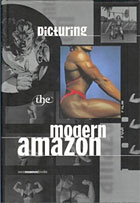
Books
Foundation
Writing is foundational for my performance, photo, video, and audio work and for my teaching. In my writing I develop the ideas that drive and permeate my art and teaching. Many of my published writings are performance texts.
Passion
I love to write. Writing clarifies experience and writing is a way to create beauty. Trained as a scholar, I love researching the subjects that excite me. Synthesizing my life experiences with my studies, I develop practices as well as theories that build the body of love, not only for myself but just as importantly for readers and audience members. (Building the Body of Love is the subtitle of my book Monster/Beauty.)
A Lush Terrain
My writing is sensuous, poetic, and embodied, personal and philosophical. Sexual intimacies and intellect, prose and poetry, critique and romanticism, high emotion and scholarly persuasion recur, as do friends' and family's words from conversations. Personal reflection, autobiography, and lyricism are paramount. Graphic and sexual language are embedded in the lush terrain of words that convey an embracing–and bracing–authenticity and intensity of feeling and thinking.
Identities and Voices
We all have many identities, and I speak in different voices and personas–all of them me. Some of these identities are seer, goddess, little girl, lover, scholar, oracle, elegist, elder, art critic, daughter, mythmaker, wife, singer, fairy, friend, and prophet. My narratives are multiple and fragmented, often unfolding in several literary genres as well as spoken in various of the voices listed in the previous sentence.
ErneRené Press
I founded ErneRené Press in 2011 in Tucson, Arizona. Titles include The Glamour of Being Real, 2011, and A Short Story about a Big Healing, 2013.
Featured Book
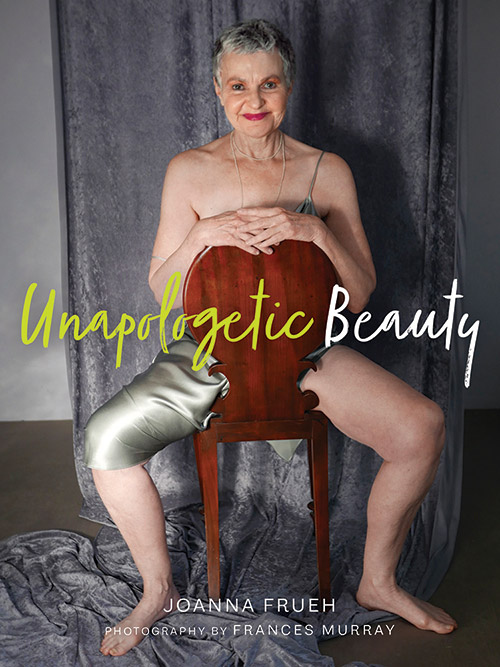
Unapologetic Beauty is my bracing critique of today's beauty ideal, the strange "perfection" of hyperbeauty, which is slick, rigid, and generic, the flash of flesh appeal, hyperthin, hyperfeminine, hyperbosomy, hypersexy, and hyperyoung. I reflect on the problem with insight, directness, and humor, draw on my breast cancer experiences, and include contributions from a breast surgeon, an oncologist, and artists and scholars who have had breast cancer. My playful, inventive presentation of tools for remaking hearts and minds disfigured by self-denying ideals offers fresh views of beauty and of the sensual pleasure found in transformative self-acceptance. Available at University of Minnesota Press
Performance Texts and Essays
BRUMAS: A Rock Star's Passage to a Life Re-Vamped
1982
This is an artist's book that includes a short story about a difficult, sexy, and troubled rock star, Brumas, who wakes up in soul-and-mind-inseparable-from-body when she meets her mystic double on a beach in Greece. A record of five songs written and sung by me, with music composed by Thomas Kochheiser, is part of the book, as are photos that build a mysterious and intimate narrative related to the text but not illustrating it. BRUMAS, lyrics included, appears in Clairvoyance (For Those In The Desert).
- A simple linear meaning cannot be extracted from BRUMAS. The dense and explicit language, combined with the photographs and record, explode the purely narrative and force a multi-textural/textural reading.
- — Sarah Moore, High Performance, Vol. 6, Number 4, 1983

Erotic Faculties
1996
This book is a collection of pieces, mostly performance texts, from 1986 through 1994. My engagement with the body and erotic knowledge are paramount as I begin to create myself in the image and identity of a goddess, whose speech, thought, and feeling are powerful and authentic. Passion and scholarly accuracy are part of the dynamic of private and public as I investigate love, gender, aging, and the meaning and possibilities of a woman's freedom while critiquing academic insularity and exploding myths about woman and cultural constrictions that bind women. The book includes black-and-white photos created in collaboration with Russell Dudley.
Available at amazon.com
- This is the strongest, most powerful book I have read in a long time. It initiates a kind of writing, or opens a kind of fissure in writing, that needs to be opened, . . . To borrow the title of one of the essays, I think it will literally be the "mouth piece" of a new kind of critical practice.
- — Henry Sayre, from the back cover of Erotic Faculties
- . . . her unutilitarian verbiage is convincing and sexy.
- — Robert Christgau, Village Voice, July 30, 1996
- In Frueh's work, the body of knowledge confronting us is her own: thinking, feeling, moving. Informed but not governed by theory, subject to but not subjected by history, Frueh's body seems exquisitely self-conscious. She is liberated to the extent that she has come to terms with her oppression; learned and then refused the puritanical impoverishment of imagination . . . on which that oppression is based. . . . As a male whose gaze is frankly attracted to and fascinated by women, I find Frueh's idea of female authority loaded with jailbreak possibility. Her art of experience–belief in the integrities of the body, self, what can be said as well as what cannot–points toward a home that too many of us have never really known. It's close, I seem to hear Frueh whispering, and you have nothing to lose but your loneliness.
- — David Hoppe, New Art Examiner, October 1996
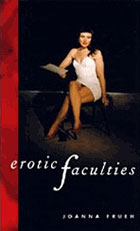
Monster/Beauty: Building the Body of Love
2001
In this book of essays, many of which are performance pieces, I develop a theory and some practices of beauty. I define beauty as a sensuous presence that emerges from intimacy with one's own aesthetic and erotic capacity rather than as the hopeless pursuit of perfect appearance that a contemporary fashion and beauty culture drums into us. In my definition of beauty, it overturns convention and is a creative activity and activism for everyman and everywoman. My implicit call for a revolution in beauty makes of beauty something "monstrous," an exceeding of cultural limitations regarding age, weight, shape, race, sex, and gender that produce bodies of self-loathing. My intention is to build the body of love, to help people to enjoy themselves and to be enjoyed.
In Monster/Beauty I expand ideas addressed in Erotic Faculties about the erotic, beauty, older women, sex, and pleasure by revising and challenging both traditional and iconic models of beauty, such as the goddess, the vampire, the blonde, and the bodybuilder.
The book also includes a substantial section on the teacher, teaching, and education.
Monster/Beauty features a black-and-white photo "portfolio" produced in collaboration with Russell Dudley. An essay by me about our photos, "Aphrodite's Garden," precedes the photos.
Available at amazon.com
- Frueh achieves mastery over beauty by rejecting it as primarily an issue of visual attraction or an appeal to another. In her opinion, such a conception of beauty represents a loss of its corporeality. . . . The value of Frueh's book resides in her ability to give life to the conflicts that stem from the disharmony and paradoxes that circumscribe the differing concepts and values associated with beauty.
- — Saul Ostrow, Art Journal, Fall 2005
- . . . this valentine from Frueh [is] a welcome theory for love and harmony in an ever-expanding women's movement. . . . Frueh's outstretched hand to precisely our [third-wave] generation will certainly be appealing . . . . [and] it is Frueh's unique and giving outlook on life as an erotically-charged, curious mid-life feminist–written with a delicious combination of traditional research, personal anecdote, and poetry–that is the most exciting element of the book. . . . At a time when the examples and warnings of our [second-wave] feminist heroes . . . often make it tempting to assume that the cycle of aging inevitably leads one to jadedness, disappointment, and disenchantment, Frueh's voracious and continuous appetite for all life's (physical and intellectual) pleasures presents an example for feminists to aspire toward regardless of age.
- — Maria Elena Buszek, BUST, Spring 2002
- . . . this is a book to savor. . . . . it can be read as if it were a novel, for enjoyment alone, because it tells highly entertaining stories about the author's uninhibited, pleasure-seeking [and]. . . . delicious experimentation with new ways of feeling and being. . . . . her practices refresh the everyday . . .
- — Carol Siegel, Rhizomes, Issue 3, Fall 2001
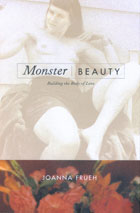
Clairvoyance (For Those In The Desert): Performance Pieces, 1979-2004
2008
Eighteen key performance texts and many photos create a honed, retrospective look at my work from the beginning of my career into the early 2000s before the work becomes more consciously directed by my desire to help people dream the world into being. The book shows a transformation in my work from emotional turbulence and a frustrated seeking of love and grace to discovering them in my own innocence. Innocence is simply a capacity for passionately and peacefully following one's heart, and that capacity, which is everyone's, needs tending and renewal. Clairvoyance includes collaborations in the 1980s with Thomas Kochheiser, pieces that are grounded in my lyrics set to his music. Clairvoyance is lucid evidence of originality and independence as a writer, artist, and thinker who foregrounds pleasure, love of men, the female body, the connection of sex and spirit, knowing through the body as well as the mind, and learning to trust her own feelings and her perceptions of the world. The book's introduction is an essay by the artist and scholar Jill O'Bryan. Color and black-and-white photos feature selections from a collaboration between O'Bryan and me, Joanna in the Desert; pictures by Russell Dudley and me; and other performance documentation.
Available at amazon.com
- . . . a beautiful and very pink 400-page tome that looks great on a coffee table. . . . Frueh embraces her own messy desires as well as the darker recesses of women's sexuality–particularly heterosexuality. . . . . From the very start of her career, it seems, Frueh had found her voice, . . . she risks everything and is afraid of nothing. . . . Frueh is . . . a lot of fun to read, . . . dazzling when she riffs on the pleasures of chocolate cake . . . or the real significance of Greek goddess Aphrodite . . . . Clairvoyance is a great place to start learning about . . . one of the more intriguing . . . performance artists of our time.
- — Jarret Keene, Tucson Weekly
- . . . an artful, insightful, and important collection . . . . Frueh analyzes and refutes traditional constructs of femininity, womanhood, and sexual desire with a ferocity and honesty that is at once refreshing and disarming. . . . With a narrative voice devoid of conventionality and restraint, . . . Frueh's language is one of liberation, unbridled sensuality, self-discovery, and self-love.
- — Joanna Chlebus, Feminist Review
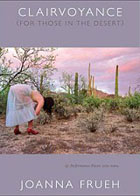
The Glamour of Being Real
2011
209 short aphorisms spell out the glamour of being real, which is the art of self-creation, of trusting oneself. Passionate and insightful, and sometimes paradoxical, this helpful guide expresses simple means for overcoming bodily and everyday dilemmas. From the necessity of change to intimate relationships to eating, aging, and everyday life, The Glamour of Being Real is filled with eloquent activism about the pleasures of soul-and-mind-inseparable-from-body.
The world needs this book.
Dianne in New York
It is Amazing. We will be talking about this for the rest of our lives. I'm just sorry I didn't have this to read when I was, say, 30 years old. It would have been life-altering.
Suzanne in Illinois
Available at Antigone Books
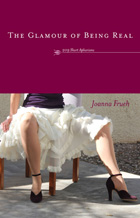
Memoirs
Swooning Beauty: A Memoir of Pleasure
2006
After the deaths of my parents and a divorce from my second husband (Dad died in 1999 and Mom in 2000, and Russell and I divorced in 2001), I found solace and healing in pleasure. No surprise, because I believe that pleasure is an essential tool for building a life of beauty, peace, and well-being. In Swooning Beauty I remember my childhood through my early fifties with stories, events, and theorizing in which pleasure, such as eating chocolate, making love, gardening, friendship, exercise, and creating beauty in one's environment and of one's body, transforms pain, revealing celebration as a way of being.
Available at amazon.com
- For Frueh there's certainly no mind/body split–both are open to any experience, any possibility. . . . she lives in the moment, embraces it in every detail, in a way that I can only admire, . . . She always stops to smell the flowers.
- — Natalie Bennett, Blog Critics
- Swooning Beauty is a luscious delicacy . . . . This book chronicles the epic journey of a hero who is supporting herself through . . . great losses by clutching pleasure close to her heart and then letting go, opening herself to blissful new possibilities. . . . This autobiography refreshingly . . . celebrates embodied pleasure . . . .
- — Rachel Hurst, Atlantis: A Women's Studies Journal, Vol. 32, No. 2, 2008
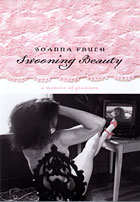
A Short Story about a Big Healing
2013
How do you heal yourself? By healing the heart, declares Joanna Frueh in this inspiring and beneficent book about a 10-year odyssey of her own healing between 2002 and 2012. Through personal experiences of mending a fractured wrist and curing breast cancer, Frueh offers the exciting and unconventional insights for which she is known. A Short Story about a Big Healing focuses on health as Frueh's latest illuminating and robust perceptions about our bodies, our beauty, and our social and everyday realities
Available at Antigone Books
- This is a noble story of a spiritual artist's—aka everywoman's—exploration of herself as she moves through diagnosis and healing of the mind-body-spirit trinity.
- — KGW
- Liberating and affirming, virtuoso, exquisite, educational, and profound. I feel invited not instructed. This book releases me from my mourning of my sensuality as it relates to my breasts and into a realization that we are the masters of this journey called life.
- — Mary S-B
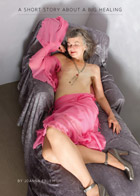
About Joanna
Joanna Frueh: A Retrospective
2005
This is the companion book to a highly selective exhibition of work from the early 1980s to 2005. The exhibition included self-portrait photos by Russell Dudley and me, performance documentation photographed by him and me in collaboration and also by others, costumes, and performance videos, audio, and texts. Tanya Augsburg, a performance scholar who organized the exhibition, wrote the introduction. The book also features four more essays, including one by Dudley, color photos of individual works and of the installation, and an exhibition checklist. In "Perfect Garden," my essay in the book, I focus on my connection as a scholar, an artist, and a woman with Dante Gabriel Rossetti and his paintings and poetry. His work was the subject of my Ph.D. dissertation The Rossetti Woman.
Available at amazon.com
- Long before I ever met Joanna, I was drawn to her work. Her performances and writings combine a unique balance of art historical rigor, sexuality and poetry. The work is never precious, but forthright in its exploration of beauty. Over the past two decades, Joanna has invested herself entirely into this practice and has created a body of work that is sensual, intelligent, and adamantly individual.
- — Steven High, Foreword to Joanna Frueh: A Retrospective
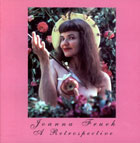
Art Criticism
Feminist Art Criticism: An Anthology, co-edited
1988
This is the first collection of essays by American feminist art historians and critics. The volume includes major contributors to feminist art history and criticism, such as Carol Duncan, Arlene Raven, and Moira Roth, and brings together an array of subjects–that range from women's cinema to the power of male aesthetics in modern art to expositions of Chicana art and of contemporary women's art that honors the goddess–and approaches–from psychoanalytic theory to robust praise. In my essay, "Towards a Feminist Theory of Art Criticism," I call for an art criticism that has the generosity to welcome personal perceptions and revelations as well as the preciseness and attentive research of the best scholarship.
- These thirteen essays from the 1970s and early 1980s mark the state of the art of feminist art criticism and put forward a vision of what it ought to be.
- — Pat Aufderheide, The Women's Review of Books, January 1989

Hannah Wilke: A Retrospective
1989
This is the sole essay in the first book about Hannah Wilke, a pioneering artist in the exploration of the female body and women's beauty. The essay is an early development of my own theories of female beauty through the discussion of a woman artist with whose work I identified and with whom I was friends.
- Breaking the bonds of tradition, . . . Joanna Frueh has written a startling, heretical essay . . . that has the potential to give new meaning to how we write art history.
- — Cassandra Langer, Women Artists News, Winter 1989/90
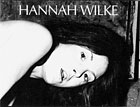
New Feminist Criticism: Art, Identity, Action, co-edited
1994
The essays in this anthology, sparked by ideas and events of the 1980s and early 1990s, are united by their common interest in feminism as a vehicle for intellectual exploration and individual communication and understanding. Concerns about cultural visibility, parity, and power are a constant theme as artists, art critics, and scholars use and consider history, theory, and identity–black, lesbian, Asian-American, midlife, maternal, and more–in order to elucidate the art and thought of women. My essay, "Visible Difference: Women Artists and Aging," begins my public engagement with the literal and figurative art of aging. Mine is an activist engagement intent on transforming age from a metaphor and reality of suffering in contemporary culture so that experiences and representations of age and aging vitalize both individuals and society.
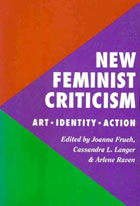
Picturing the Modern Amazon, co-edited
2001
This book is the lavishly illustrated companion to the exhibition of the same name that opened in the spring of 2001 at the New Museum of Contemporary Art in New York. The subject is female hypermuscularity from the nineteenth century into the present. I was one of the exhibition's three co-curators. From bodybuilders to a sports historian, a philosopher, and art historians, contributors to this book consider the beauties, daring, difficulties, realities, and problematic presence of hypermuscular women.
My contributions to the volume include an essay, "The Real Nude," in which I suggest that we see the classical Greek female nude as the female bodybuilder's conceptual ancestor; a lightheartedly bantering yet intense conversation with one of my co-editors, a bodybuilder, about comics featuring hypermuscular women; and interviews with five bodybuilders, including the renowned Bev Francis, whose "manly" muscles befuddled and disturbed judges in the film Pumping Iron 2: The Women.
Available at amazon.com
- Frueh's articulation of women's general desire and ability to be both Aphrodite and Amazon . . . . A renowned feminist art historian, Frueh's disappointment over feminism's historical revulsion of the female bodybuilder is palpable, even as she negotiates a space for her in the here-and-now of the movement. . . .with the poignancy [and] lyricism of . . . [her] joyful prose. . . . Picturing the Modern Amazon is a complex and insightful look at a culture whose relevance few feminist scholars have had the courage to tackle.
- — Maria Elena Buszek, Woman's Art Journal, Fall/Winter 2002
- A great compendium of pictures and information–you don't get this stuff often. This book talks to your inner Terminatrix–not only guys get muscles. Gals can be hardbody beautiful too!
- — GabbyXena 123, April 22, 2002, amazon.com
